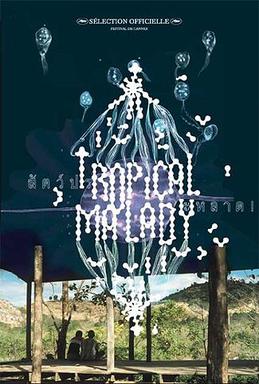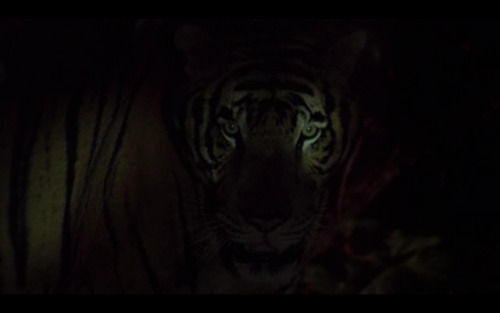Sunday, December 4, 2011
Foreign Fears: Tropical Malady (2004)--สัตว์ประหลาด or Sud pralad
Tropical Malady (2004) Thai or Sud pralad
Director: Apichatpong Weerasethakul
Cast: Sakda Kaewbuadee, Banlop Lomnoi, Sirivech Jareonchon, Udom Promma and Huai Deesom
reviewed by Nickolas Cook
Watching TROPICAL MALADY is somewhat like drifting into someone else's narrative--a half-dream state, a slight adjustment of reality, a drone at the back of the head. But I don't mean that in a bad way, mind you; but there is a definite sense of dislocation...of disconnection, when you watch this modern classic of 'magical realism'. Its structure feels truly less Asian than Latin American in its depiction and devotion to the preternatural world of forests, and the strange animal spirits which dwell within it.
But TROPICAL MALADY is more than an examination of that weird twilight world that exist beyond the safety of the city lights and the four walls and ceiling within which we find such dubious security. In fact, its first part is devoted to a young soldier who falls in love with a young innocent village boy, and their sweet courtship, as they begin to discover one another's desires and fears. In this first part we are treated to the love story, up until we see the soldier visiting the boy's parents' farm and we hear a radio report of the strange deaths of local cattle, blamed on a wandering predatory jungle cat. The young boy wanders off into the jungle and...
Abruptly, we find ourselves with the soldier who is in the jungle looking for a lost villager. Slowly, deliberately the soldier keeps wandering deeper and deeper into the jungle, hearing the frightening sounds of a big cat and finding evidence of its feeding, until night falls down around him. It's then that he meets up with one of those jungle spirits, the spirit of a tiger shaman, who can turn from human to cat.
And its the jungle scenes in which we see the power of this director's ability to frighten and entrance, as we are treated to visions of terror and beauty. Sound also plays an important role in this film: there are many moments when there are no human voices, only the incessant droning of insect and animal life in the jungle's depths, or even at times the constant background ambience of the city streets, an arcade, or even the distant sounds of music echoing across the nighttime cityscape, the sound of one man's frightened breathing as he stumbles after an unknown entity in the dark, thickness of the jungle's depths. And its through the use of sound and imaginative camera work that we can almost feel that same jungle surrounding us, entrapping us with its ancient secrets of animal and man alike.
I highly recommend it to the viewer who is just beginning to discover what joys and beauties that can be found in Asian cinema, as well to the film buff who feel that they have seen everything the movies have to offer. But be warned this is not a gore-fest unto like Miike, or even a narrative that lays out a simplistic plotline of violence and explosions. No, this is a film for those of us who still appreciate the work of a master who knows how to use the image as a storytelling device, without the hammer over the head approach of modern film's expositions...you know the kind of movie where someone has to pause halfway through the film to explain to one of the characters what has happened and what is going on. If that's what you're looking for, this ain't gonna be the movie for you. In point of fact, as I complain about such imbecilic filmmaking, I think it's safe to say that there are few modern films like TROPICAL MALADY, which is as it should be: I'm not sure if modern cinema could handle such weighty and yet gossamer visions.
--Nickolas Cook




